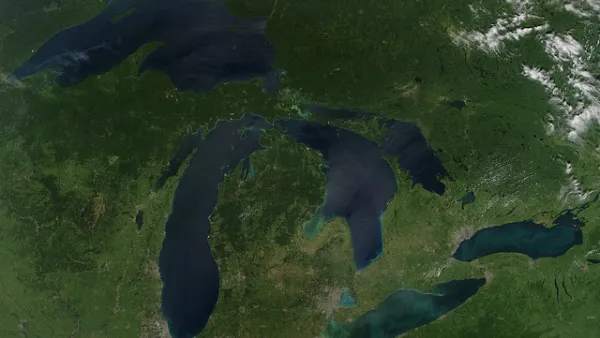Researchers at the University of Nebraska have been working with the Nebraska Department of Natural Resources to develop best practices for predicting and planning for the future water needs of urban developments.

It’s often taken for granted, because it seems so simple – turn on a faucet and there’s water. But managing a finite resource in a landlocked state is anything but simple.
In fact, five state agencies and 23 locally elected Natural Resource Districts all play a role in safeguarding Nebraska’s water. The University of Nebraska-Lincoln, through many research partnerships with state agencies, is a part of the effort, too.
Researchers in the College of Architecture and the School of Natural Resources have been working with the Nebraska Department of Natural Resources to develop best practices for predicting and planning for the future water needs of urban developments. In a forthcoming study led by Zhenghong Tang, associate professor in the Community and Regional Planning Program at Nebraska, Husker scholars have provided a novel approach for state water resource managers or city planners to estimate future consumptive water use – water that is not recycled – in residential areas in cities and small towns.
Their new approach pairs water use data with high-resolution aerial images gathered from geographical information systems to estimate urban consumptive water use for the populated areas. The images reveal landscape features that directly impact water loss.
“In the current research, there is no fast way to estimate residential consumptive water use,” Tang said. “Our model developed a simplified way to estimate it quickly and cost-efficiently.”
The model’s emphasis on residential areas also is new to Nebraska. Historically, the state’s water management efforts have focused primarily on agriculture and crop irrigation, since agricultural production is the state’s chief economic driver. During the last decade, however, the state has begun new efforts for residential water planning in response to the population’s shift to more urbanized areas.
“We were tasked with providing better models for the management of water resources in municipalities and residential areas and to provide more information for the state and its stakeholders,” Tang said. “Agriculture is the largest consumer of the state’s water resources, but now, two-thirds of the population lives in urban areas and industry is taking a larger share of resources. Not planning for this could be harmful to the state’s economy, and its citizens.”
Tang said analysis of Sidney, Grand Island and Lincoln showed how per capita water usage increases as a result of suburban growth. As the cities dispersed from urban centers into suburban developments, water usage rose even though their populations were less dense. The spatial analysis showed higher water usage in suburban areas with larger landscape areas and lower water usage in downtown areas.
Tang said future city planners could use this information and the water use estimation model to design more water efficient and drought-resilient developments.
“It is critical to plan for population and industry growth in urban areas when developing integrated water management plans, and to account for drought,” Tang said.
The study will be published in the November issue of the journal Sustainable Cities and Society and is available here.
by Deann Gayman | University Communication
FULL STORY: Husker research flows to help state's water management plan

Analysis: Cybertruck Fatality Rate Far Exceeds That of Ford Pinto
The Tesla Cybertruck was recalled seven times last year.

National Parks Layoffs Will Cause Communities to Lose Billions
Thousands of essential park workers were laid off this week, just before the busy spring break season.

Retro-silient?: America’s First “Eco-burb,” The Woodlands Turns 50
A master-planned community north of Houston offers lessons on green infrastructure and resilient design, but falls short of its founder’s lofty affordability and walkability goals.

Test News Post 1
This is a summary

Analysis: Cybertruck Fatality Rate Far Exceeds That of Ford Pinto
The Tesla Cybertruck was recalled seven times last year.

Test News Headline 46
Test for the image on the front page.
Urban Design for Planners 1: Software Tools
This six-course series explores essential urban design concepts using open source software and equips planners with the tools they need to participate fully in the urban design process.
Planning for Universal Design
Learn the tools for implementing Universal Design in planning regulations.
EMC Planning Group, Inc.
Planetizen
Planetizen
Mpact (formerly Rail~Volution)
Great Falls Development Authority, Inc.
HUDs Office of Policy Development and Research
NYU Wagner Graduate School of Public Service




























